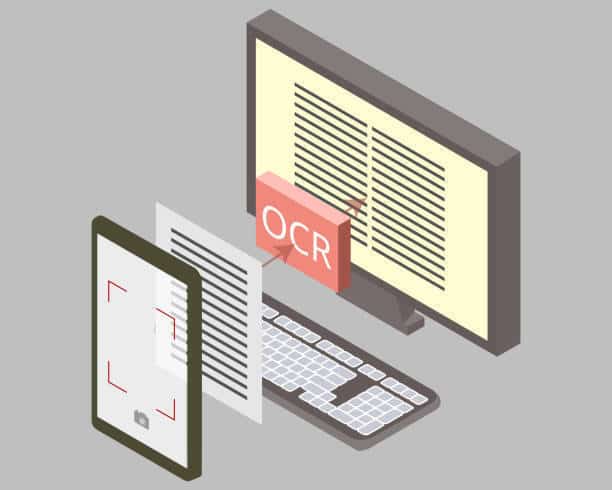The internet world is full of inventions and there is daily new upgrading. Almost everything comes on the screen. Same as these machines converting life into a faced paced train. Optical Character Recognition (OCR) technology helps consumers to convert papers into pixels.
Optical character recognition is modifying print papers into digital format. The leverage of technology makes the most challenging task of paperwork straightforward. Businesses don’t have to waste time dealing with manually entering all data. OCR technology significantly enhances the small businesses which deal with various invoices. They can send customers invoices remotely and save them in secure databases. While the OCR scanner scrutinizes the image into computer text, it also protects data with an authentication code so scammers can not access the data.
How can Businesses Adopt OCR technology?
Businesses can use any online OCR app to convert text but to secure data from the fraudster, they should use authentic text scanner software. Many businesses adopt not well-established apps, which makes them vulnerable to scammers. The chance of data leakage increases using a not stable OCR scanner. The inefficient document scanners also raise the risk of security, accuracy, and productivity. So before adopting any OCR scanners, businesses must have fully checked the application’s background
How Does Optical Character Recognition (OCR) Technology Work?
OCR scanner is the software to convert the paper’s text into machine language so a computer can read. OCR system extracts the data from the documents. Images or any written material from print papers. Text scanners use proactive algorithms to analyze the image of documents and to editable the data. The OSR technology works on the four processing steps pre-processing, segmentation, recognition, and post-processing.
Deep knowledge of these steps helps businesses to take leverage from OCR technology. It also enhances the work speed in the companies, and employees can use OCR scanners more efficiently and avail accurate results. According to Polaris Market Research, The global revenue of the OCR services in 2022 is $10.63 billion. Furthermore, it is predicted that OCR technology grow with a 15.4% compound annual growth rate (CAGR) from 2023 to 2030. Finding out authentic OCR app from the competition is not easy, as consumer businesses should always check the given below steps for accurate text reading.
Pre-processing
In the first step, OCR technology utilizes a pattern technique it isolates all data on documents known as the “Glyphs”. It also enhances the picture in pre-possessing by improving noise reduction, color contrast, and enhanced brightness. It enhances the picture quality so for further proceeding.
Segmentation
This process is to utilize the isolated Glyphs and converts those into data. It efficiently breaks the paper’s written text into small breaks, such as lines, words, and numbers, to store the documents accurately. The segmentation technique accelerates the conversion of the papers into the computer language.
Recognition
After that, OCR technology utilizes the advancement of AI and machine learning algorithms to recognize all broken-down elements. The OCR scanning software identifies and matches all characters to the defined repository.
Post-processing
In the ending step, it again checks all information and clears all errors and incorrect data in the recognition process. The OCR technology corrects spelling mistakes, changes the format and removes unnecessary data. Depending on the consumers ‘ demand, it also changes the image format according to require layouts like JPG, PNG, or PDF.
Benefits of OCR technology in Businesses
Document Assortment
Over the decades, working on the papers and storing them safely has been the most challenging task for any business. Now, the business can store sensitive information in secure databases after OCR technology. These arrange the document on the date of papers was written, which makes access to particular records for employees easy. The traditional way of storing documents is not accurate and defenseless. Hard copies can be stolen and destroyed because of natural disasters. But now, with OCR technology, documents can be stored, indexed and secure effectively without extra effort.
Document Saving
The OCR technology stores all the invoices and manages all documents in one database. So it is easy for businesses to search for particular bills anytime. It can be used in-store wide variety of documents, including payment bills, invoices, and verification documents. OCR scanner technology also saves the documents according to the format so a consumer can search without any effort. Businesses can retrieve any data in a minute without any effort.
Enhance Growth
The documents are scanned and stored with OCR technology fast and efficiently without human error. It eliminates the time-consuming the employee takes to extract the data manually. OCR scanning provides digital access to the data that can be shared and edited. OCR scanner assists companies’ employees in higher productivity by extracting the data quickly and storing all documents in one step. The proactive OCR readers scan the documents quickly and process the verification rapidly.
Critical Points of OCR Technology
OCR scanners not only enhance the work for businesses but also reduce customers’ headaches. They can send invoices from home and also submit verification documents remotely. Businesses only have to use the OCR system to enhance customer satisfaction and provide them with secure sources. It increases the trustworthy environment between the customer and the business. Companies offering customers to send and edit documents from anywhere and anytime enhances their reputation.





